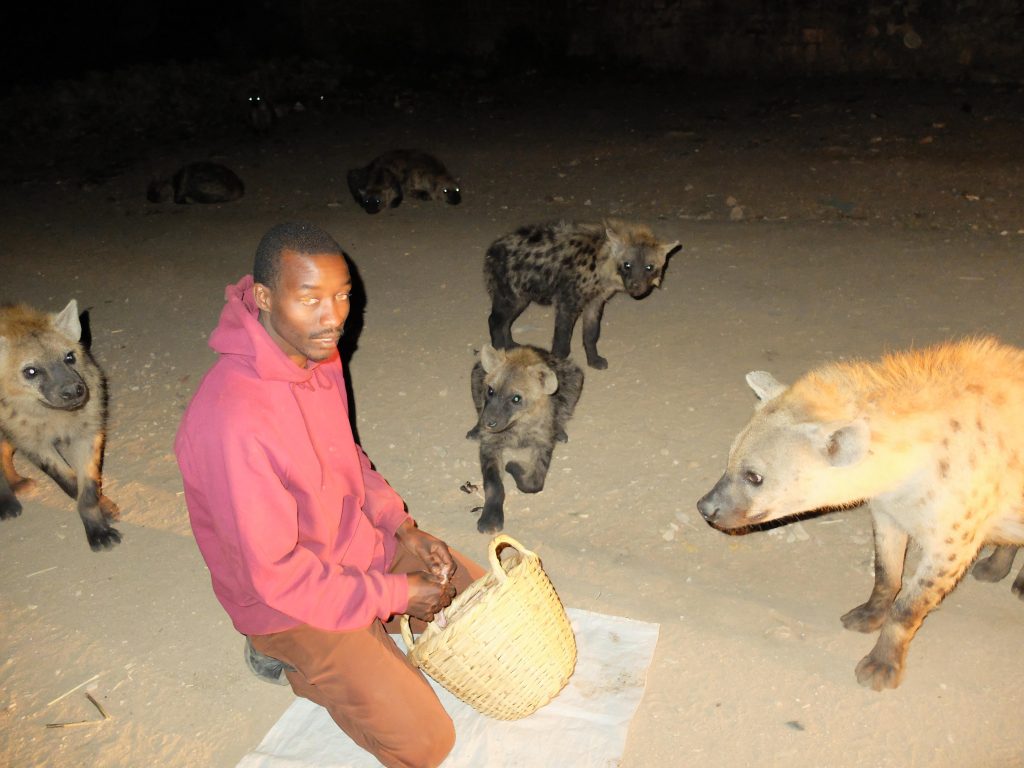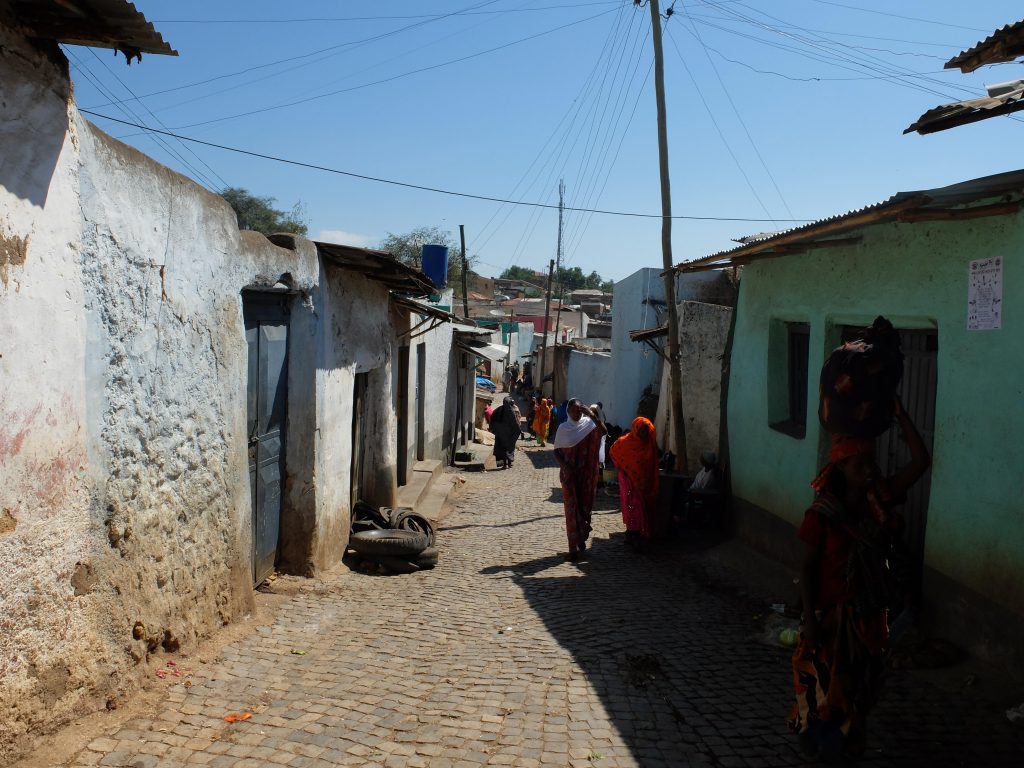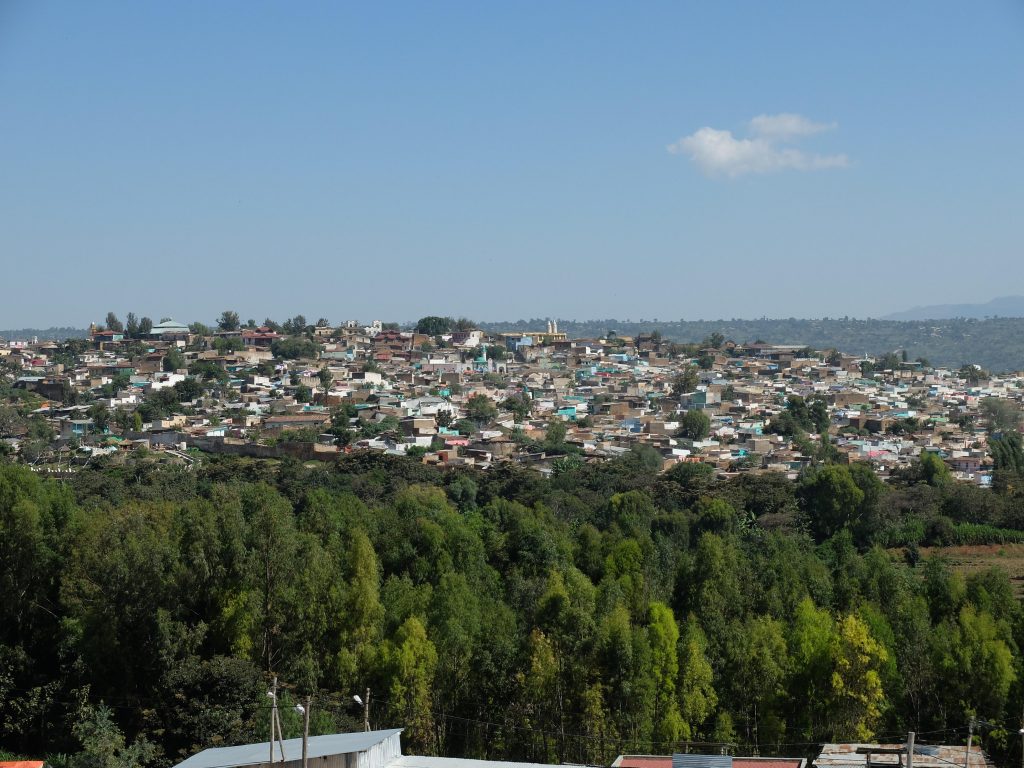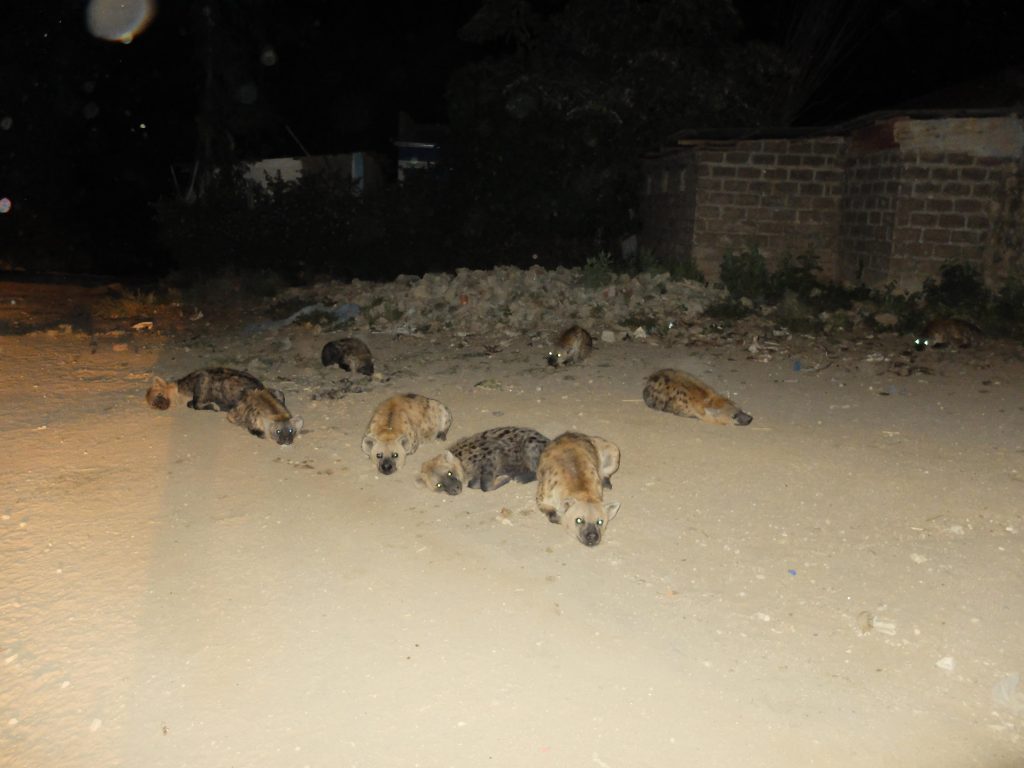
Hyenas, coffee, and qat — the city of Harar in Ethiopia offers much to intrigue visitors with its robust history and a unique culture.
Legendary British explorer Sir Francis Burton once described Harar as “[an] ancient metropolis …the only permanent settlement in Eastern Africa, the reported seat of Muslim learning, a walled city of stone houses, possessing its independent chief, its peculiar population, its unknown language, its own coinage, the emporium of the coffee trade.”
Today one can still find traces of that breathtaking exoticism in this unique city located on the Ethiopian highlands and even enter the walled city through the same gate once used by Burton during his trip to the region in the mid-19th century. Standing on a hill that overlooks the city one can enjoy a view quite similar to what he experienced over a century ago. The city is one of Africa’s oldest urban centers. Its famed walls dates to the 13th century though the city is far older.
To monopolize the lucrative trade in coffee and other commodities, the metropolis was closed to most outsiders and non-Muslims for centuries.

When Burton arrived on the 3rd of January 1855, the ruling Emir treated him as a guest but, he was ushered out of the city just ten days later; he became the first Westerner to breach its walls. “The coffee of Harar is too well known in the markets of Europe to require description,” Burton wrote.
Today, Harar is also famous for qat, a leafy green plant chewed as a mild stimulant, which is traded and consumed all over the city. The drug is also chewed in Kenya, Somalia, and Yemen where “King Qat” is said to be contributing to the country’s growing water shortage. Harar is said to produce the best quality qat in Africa and a moist bag of the plant purchased in Harar can sell for several times its purchasing price in Somalia.
Coffee is still a big part of the culture in Harar. During a traditional Ethiopian coffee ceremony, some fresh coffee is brewed while incense is lit nearby. The coffee is served in short cups similar to the Turkish style and is often served with snacks such as popcorns or peanuts.
A few decades after Burton, the French poet and adventurer Arthur Rimbaud lived in Harar from 1880 to 1891. Rimbaud worked as a coffee trader and gun runner. Rimbaud’s poetry remains popular today, and the house he lived in remains a popular tourist attraction and is also a museum.

The former Dutch Army deserter was witness to a turbulent period in the city’s history. In 1875, Ottoman Egyptian forces occupied the city ending de facto independence. When Britain seized Egypt in 1882, it became the de facto ruler of Harar as well. The British ended their occupation in 1884 and gave the Emirate of Harar its independence. As a sort of apology for their occupation, the British left the Emirate a few cannons yet, not enough to discourage Ethiopia — a rising power in the region.
In 1887, Harar fell to the Ethiopians who attacked to counter creeping Ottoman-Egyptian influence in Eastern Africa. Abyssinian forces under Menelik II defeated the Harari forces at a place called Chelenko, about 70kms from the city. The Hararis were hopelessly outnumbered and outgunned, and seven hundred of the town’s bridegrooms were said to have been killed or at least that’s the number locals today seem to remember. Regardless, the defeat spelled the end of the walled city as an independent state.

To this day, the base of the seating area in a traditional Harari house is painted red to symbolize the bloodshed by those seven hundred. There is also a scarf, worn by the grooms, which is known as a ‘satti baqla’. This translate as ‘seven hundred’ and this worn at weddings to symbolize the sacrifice of these men.
After the defeat at Chelenko, a mosque built by the Ottoman-Egyptian period was replaced by a large church — the one place I was refused entry as a journalist. Today it the only one within the city’s walls and a bastion of Orthodox Christianity. During this period Harar became known as the fourth holy city of Islam due to its role as a center of Islamic learning and a surprising number of residents in Harar’s walled city can speak Arabic.
Harrar suffered even further under both left wing and right wing strands of totalitarianism in the 20th century. In 1935, the areas was bombed by the advancing Italian Army under Benito Mussolini. Il Duce colonized Ethiopia the country until its liberation during World War II. Ethiopia’s last emperor, Haile Selassie honeymooned in Harar and locals will tell you that half a century later Nelson Mandela secretly trained there as a young guerrilla. When Selassie was overthrown in 1974, Ethiopia succumbed to one of the world’s most brutal communist regimes. At least a million Ethiopians died during this period. Yet, for some reason, Czechoslovakia helped the communist government build a brewery in Harar that still operates today. A sizable Cuban contingent fought in Ethiopia during the Ogaden War in the late 1970s, and I was surprised in the market one day to meet a middle-aged man who spoke Spanish from his time working with the Cuban military.
One local tradion that has survived is the feeding of hyenas which is done nightly at two sites where Africa’s second largest predator have become accustomed to eat bits of meat held from the hands of locals or increasingly tourists. So-called “hyena gates” mark places in the city where the animals can have access to the city.

Some link the feeding of hyenas in Harrar to a Sufi religious leader known a Aw Abadir also known as Omer Al-Ridda. Though Abadir arrived in the 12th century, the city likely already had much of its modern shape. The Tomb of Sheikh Aw Abadir remains important for many of Harrar’s Sufis and is located close to one popular hyena feeding site. The truth is that local packs of well-fed hyenas probably helps keep other packs away. Even today, fatal hyena attacks sometimes occur in Addis Ababa – Ethiopia’s capital city.
UNESCO named Harar a city of peace and tolerance in the 1990s and in this charming town ancient Ethiopian town coffee, qat, and hyenas have learned to co-exist.


1 comment
Qat, also known as khat, isn’t a mild stimulant, it’s chemically similar to bath salts. Somalis use it a lot.
There’s a clip of Ilhan Omar with a big wad of something in her cheek. I bet it wasn’t chewing tobacco.